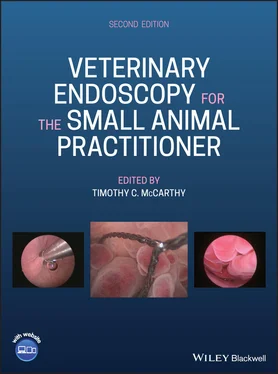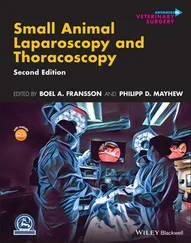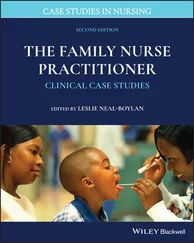Addition of CCD and CMOS video chip technology to endoscopy has dramatically improved image quality beyond traditional fiberoptic images. Even though video endoscopes are more expensive, the increased image quality and elimination of deterioration in image quality of fiberoptic bundles over time make the added expense well worth the investment.
The most common flexible endoscopes used in small animal practice are the 2.8 mm diameter 70 cm, working length fiberoptic or video uretero‐cystoscope; the 6.2 mm diameter, 61 cm working length video bronchoscope; 5.2 mm diameter, 85 cm working length fiberoptic bronchoscope; and 7.9 or 9.7 mm diameter, 140 cm working length video gastroscopes ( Table 2.4).
Table 2.4 Flexible endoscopes commonly used in small animal practice.
| Video gastroscopes9.7 mm sheath diameter, 140 cm working length, 4‐way tip control, 2.8 mm diameter working channel (Karl Storz #60914NKSK)7.9 mm sheath diameter, 140 cm working length, 4‐way tip control, 2.8 mm diameter working channel (Karl Storz #60714NKSK)Video bronchoscope (recommended to use feline video gastroscope)5.9 mm sheath diameter, 110 cm working length, 4‐way tip control, 2.0 mm diameter working channel (Karl Storz #60511NKSK)Fiberoptic bronchoscope5.2 mm sheath diameter, 85 cm working length, 2‐way tip control, 2.3 mm diameter working channel (Karl Storz #60001VLK2)3.7 mm sheath diameter, 65 cm working length, 2‐way tip control, 1.5 mm diameter working channel (Karl Storz #60002VBK2)Video uretero‐cystoscope8.5 Fr sheath diameter, working length 70 cm, 2‐way tip control, 3.6 Fr working channel (Karl Storz #60278VSK) |
2.2.11 Sheaths, Cannulas, and Trocars
Rigid telescopes are used with sheaths, cannulas, or trocars depending on the procedure being performed ( Figures 2.35– 2.40). A specific sheath is required for each specific telescope size, instrument size, and procedure being performed. Telescope trocar‐cannulas for abdominal or thoracic wall penetration come with a sharp obturator that is removed after the cannula is in place to allow placement of the telescope. Many of these cannulas also have a blunt obturator that is used when needed for replacing cannulas that have become displaced, for the Hassan technique of laparoscopy portal placement, and for paraxiphoid thoracic port placement. Sheaths for smaller telescopes are also used to protect the telescope from breakage and lock to the telescope ( Figure 2.30). Sheaths are designed with a round or oval configuration ( Figure 2.36). Round sheaths are for penetrating structures when an airtight or watertight seal is required and are used for laparoscopy, thoracoscopy, percutaneous prepubic cystoscopy, and arthroscopy. Oval configurations are used when an airtight or watertight seal is not needed, and this shape allows space for a working channel within the sheath as is used for transurethral cystoscopy. Sheaths for cystoscopy, rhinoscopy, arthroscopy, vaginoscopy, or many of the “otheroscopies” use small telescopes and have sheaths that lock to the telescope. This locking mechanism is very important for protecting the lenses of small fragile telescopes and for function of the system in performing specific procedures. When locked in place, the distal tip of the telescope is aligned with the distal tip of the sheath which protects the distal lens of the telescope. More importantly, when the telescope is locked in place, the sheath protects against excessive bending stresses along the telescope shaft. This locking mechanism also creates a watertight seal at the proximal end of the sheath so that irrigating fluid flows through the sheath into the patient. It is very important that the telescope is properly locked in place for fluid flow, to prevent interference of the tip of the cannula with the visual field, and to prevent telescope damage.

Figure 2.35 (a) An assembled cystoscope for performing transurethral cystoscopy in large female dogs with the 4.0 mm cystoscope, a unidirectional flow sheath, and a connecting bridge with locking mechanisms to connect to the sheath and the telescope. Sheath diameters are available from 17 to 25 Fr with bridges that accept instruments from 5 to 12 Fr. (b) The disassembled components of the cystoscope system.
( Source: Photo courtesy of Karl Storz: ©Karl Storz SE & Co KG, Germany.)

Figure 2.36 Round and oval sheaths for the 2.7 mm MPRT. The round sheath on the right is an arthroscopy sheath without a working channel. The oval sheath on the left is the cystoscopy or operating sheath with a working channel. The oval shape is required to create space for the working channel.
( Source: Photo courtesy of Karl Storz: ©Karl Storz SE & Co KG, Germany.)
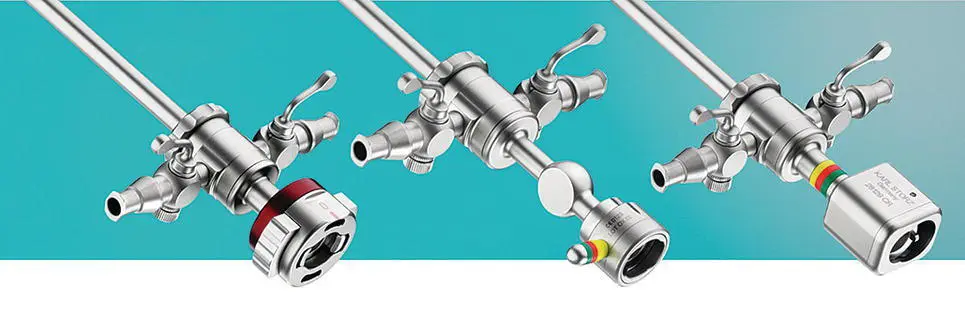
Figure 2.37 Locking mechanism designs for attaching sheaths to telescopes. From left to right: A snap in coupling mechanism with spring loaded locks, a traditional rotating ring locking mechanism, and an automatic lock.
( Source: Photo courtesy of Karl Storz: ©Karl Storz SE & Co KG, Germany.)
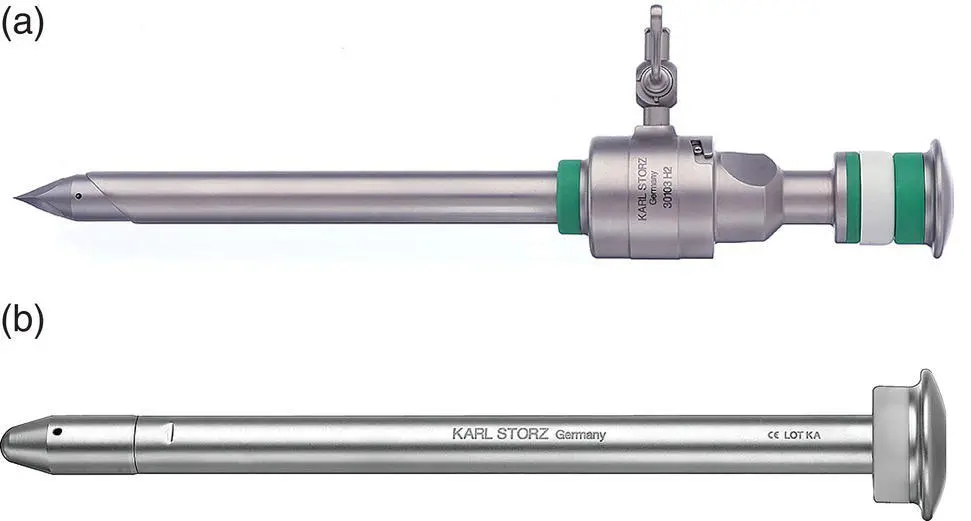
Figure 2.38 A trocar‐cannula for laparoscopy. (a) An 11 mm diameter, 10.5 cm long laparoscopy trocar‐cannula with a sharp trocar in place, a single Luer insufflation connector with stopcock, an automatic valve, and a gasket to seal around 10 mm instruments. (b) A blunt trocar for use with the 11 mm diameter laparoscopy trocar‐cannula.
( Source: Photo courtesy of Karl Storz: ©Karl Storz SE & Co KG, Germany.)
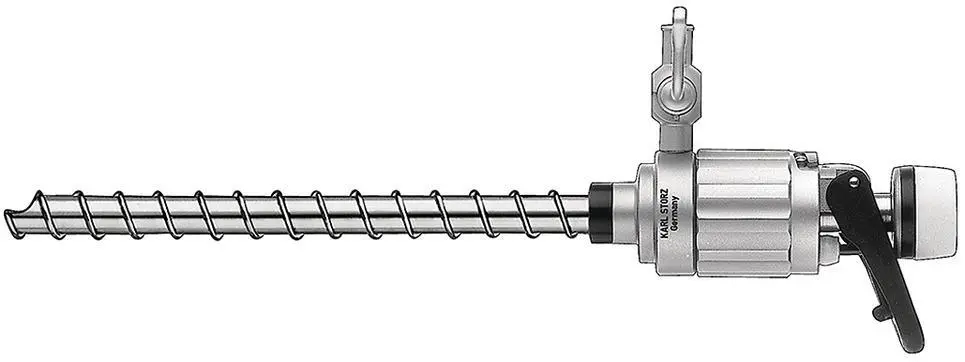
Figure 2.39 A 6 mm diameter, 10.5 cm long Ternamain Endo TIP cannula, with a single Luer insufflation connector with stopcock, a multifunctional valve, and a gasket to seal around 5 mm instruments. This cannula is placed by screwing the cannula through the abdominal wall tissue without a sharp trocar of blunt obturator.
( Source: Photo courtesy of Karl Storz: ©Karl Storz SE & Co KG, Germany.)
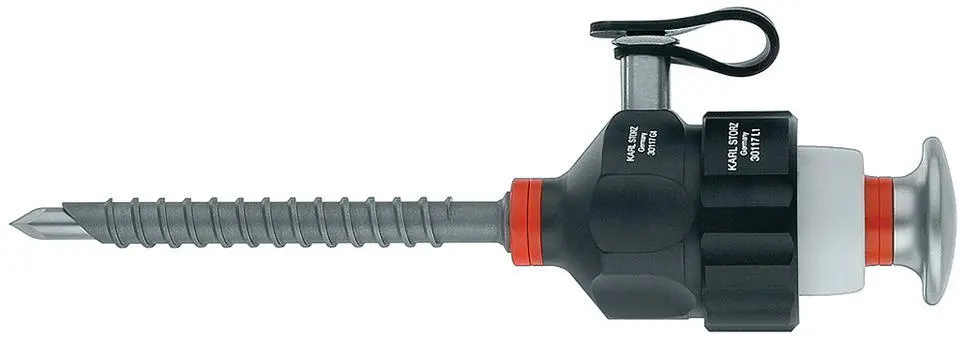
Figure 2.40 A 3.9 mm diameter, 5.0 cm long lightweight trocar‐cannula with a Silicone leaflet valve. These small lightweight cannulas are only supplied with sharp trocars.
( Source: Photo courtesy of Karl Storz: ©Karl Storz SE & Co KG, Germany.)
The locking mechanism of telescope sheaths has evolved over time from a rotating ring, to a sliding box (automatic), to a snap‐in design with spring‐loaded locks ( Figure 2.37). The rotating ring is the traditional coupling mechanism being the oldest and simplest configuration for locking the telescope to the cannula. This design works well, has withstood the test of time for dependability, and is easy to use. The sliding box or automatic lock design is slightly easier to use, is more secure than the traditional coupling mechanism, but can become hard to slide over time eventually sticking and becoming inoperable. The snap‐in coupling is the most recent locking mechanism, is the easiest to use, and provides secure attachment of the telescope to the cannula.
Читать дальше
